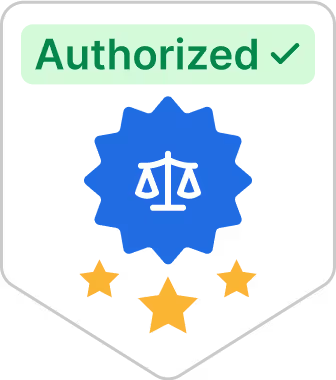The 5-Step Process to Changing a Child’s Last Name

There are a handful of reasons you might want to change your child’s last name. Perhaps you’ve recently said “I do,” and you and your child have decided to adopt your S.O.’s surname to unite your families. Or maybe you’ve recently finalized your divorce, and you and your child agree it’s in both of your best interests to process a name change after the divorce.
Whatever the case may be, officially—and by that we mean legally—changing your child’s last name is possible. It just requires some legwork, persistence… and this guide by your side.
Read on for our step-by-step explanation of how to change a child’s last name.
Step 1: Prepare a Petition
It might be tempting to use a different last name without going through the rigors of the court order system, especially if your child is an infant or a toddler.
But the sooner you do the work for a legal name change, the fewer problems your child will encounter at school, during college applications, and when applying for a driver’s license—to name just a few of the circumstances that require a “legit” name.
Every state has different requirements when it comes to a proposed name change, so be sure you know precisely what you need for the state you reside in. Typically, though, you will need to take care of the following:
- Obtain a petition/name change forms from your local family court.
- Request copies of your criminal record and, when needed, your child’s.
- Turn in a signed consent form if your child is over a certain age. In New York, for example, children 14 and older must agree to the name change and sign their consent in the presence of a notary.1
- Submit the certified copy of the completed paperwork to your county clerk along with the necessary fee. Fees normally range between $100 and $500, but this varies by state. In some cases, you may request a fee waiver.2
- Once your paperwork has been processed, you may be given a date for a court hearing to present your case before a judge.1
Step 2: Inform Your Child’s Other Parent of Your Intent
Before moving forward, you must provide proof to the court that you’ve informed your child’s other parent of your name change request and, if applicable, your upcoming hearing. In some states, notification of your request needs to be delivered through an objective third party.
Ideally, your child’s other parent will agree to the name change request and sign the petition. Life doesn’t always unfold as planned, though:
- If your child’s other parent or legal guardian objects to the name change, you might have to hire an attorney. They’ll work on your behalf to demonstrate to the judge that the name change is in your child’s best interest.
- If your child’s other parent cannot be located, you will need to provide details about your attempt to find them in your petition.
- If you don’t know the identity of your child’s parent, explain it to the court.
- If it is for any reason unsafe to have contact with your child’s other parent, explain your situation to the court and/or your family law attorney.
- If your child’s other parent’s rights have been terminated, you may have to complete and file extra paperwork in addition to your petition. This may also apply if your child’s other parent is deceased.
Step 3: Publish a Notice of Your Name Change Request
Most states require a parent or legal guardian to publish a public notice about their name change request in their local newspaper. (The same requirement usually applies if you’re changing your own name.) You may need to provide proof of publication at your court hearing, but again, this depends on the state in which you live. Usually, your court clerk will provide you with a list of approved publications.3
Step 4: Attend the Court Hearing
Before attending your child name change court hearing, ensure you have all of the required paperwork in hand, including your child’s birth certificate. There, a judge will either issue an approval of your child’s new name request—or a “decree,” in legalese—or deny your petition.
Reasons for Approval
In some cases, name change requests are clear and straightforward, and if the request is in “good manner,” the judge will offer a decree. Approval may be likely if:4
- Both parents agree to and sign the petition.
- The other parent does not object to the name change request.
- The other parent does not appear at the court hearing, cannot be located, or isn’t in your child’s life.
Reasons for Denial
If one parent contests your name change request, a judge will want to hear both sides of the argument to ensure the proposed name change is in your child’s best interest. Normally, they will weigh:
- The amount of time your child has had their present name.
- The child’s relationship with both parents.
- The impact the name change will have on both parent-child relationships.
- The child’s desires, if they’re of an appropriate age.
- The wish to share a last name with a new family unit.
All of this will be taken into consideration before the court arrives at a decision.
Step 5: Alert Social Security—and Request an Updated Card
If all goes well and a judge approves your name change request, it’s time to make it even more official by ordering an updated Social Security card for your child. (Rest assured, their SSN, which you might have diligently memorized, won’t change—just their name.) To do so, download the form online and prepare the following documents:
- Proof of your child’s identity
- Your child’s Decree Changing Name
- Proof of U.S. citizenship (such as your child’s birth certificate)
You can either mail these documents to Social Security or visit your local field office.
Either way, pat yourself on the pack. We know it can be an arduous process—and your success deserves congratulations.
Find Ease in Your Next Application with GOV+
A name change can feel like a major life change—especially with all the hoops you have to jump through before you can even begin the process. But it doesn’t have to be difficult.
You can press pause on Googling “how to change a child’s last name” with GOV+’s assistance.
We’re dedicated to providing people like you with guidance on matters relating to name change checklists, Social Security cards, and more.
Streamline the process with our informative, simple platform—and use the extra hours it affords you to celebrate with your child.
Sources:
1. Legal Beagle. How to change your baby’s last name in Illinois. https://legalbeagle.com/12716931-how-to-change-your-babys-last-name-in-illinois.html
2. California Courts. Waiver of fees. https://www.courts.ca.gov/12425.htm
3. Legal Shield. 5 steps to change your child’s last name. https://www.legalshield.com/blog/family-law/5-steps-to-change-your-childs-last-name/
4. Divorce.net. Changing a child’s name. https://www.divorcenet.com/resources/divorce/changing-a-childs-name.htm























